Talocrural joint biomechanics
1/14
There's no tags or description
Looks like no tags are added yet.
Name | Mastery | Learn | Test | Matching | Spaced |
|---|
No study sessions yet.
15 Terms
Supination closed chain
Tibial ER
Calcaneal INV
Talar ABD
Talar DF
Supination occurs at subtalar joint

Pronation closed chain
Tibial IR
Talar PF and ADD
Calcaneal EV
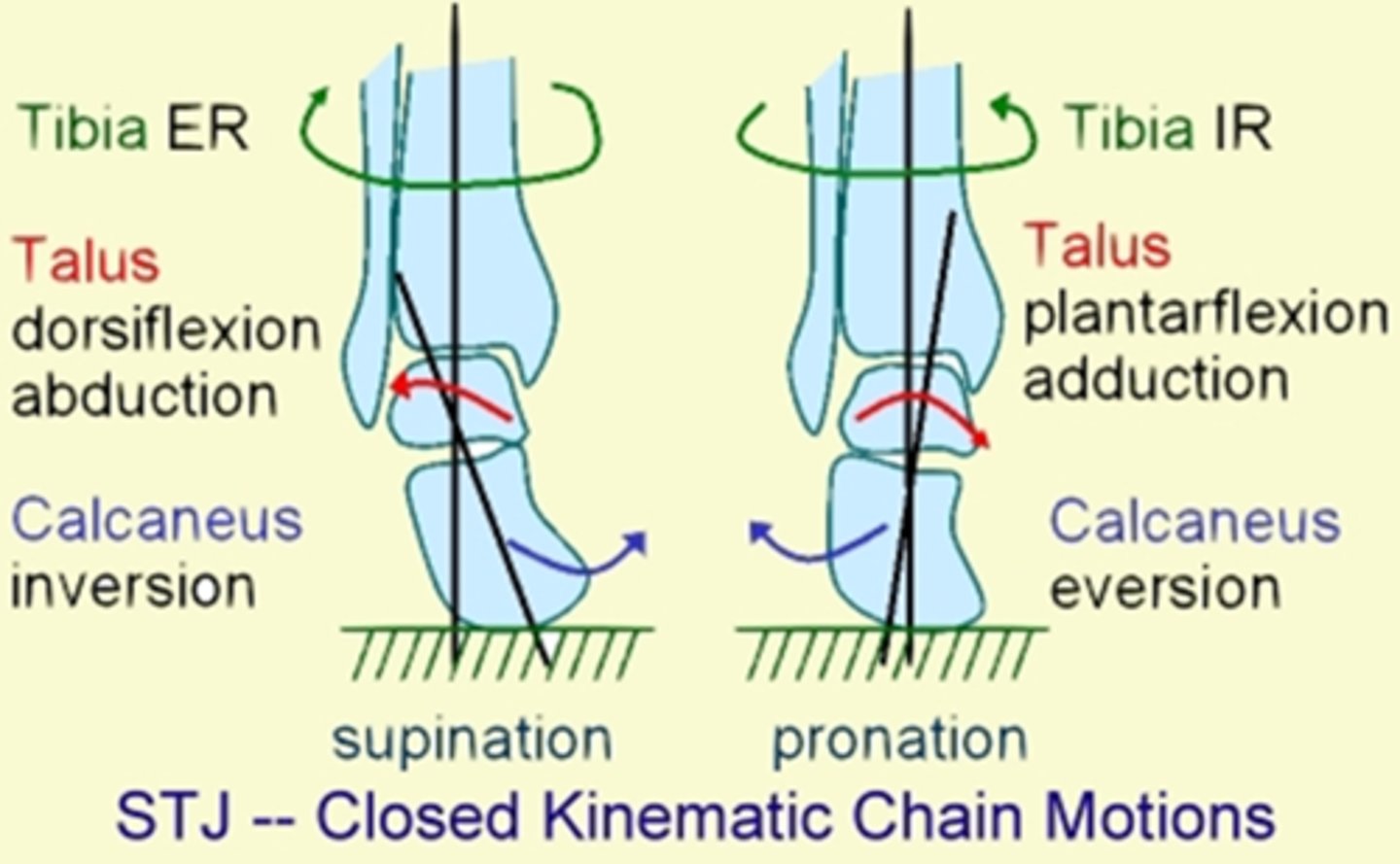
Foot general function
Stability: rigid lever
Mobility: absorbs shock, conforms to terrain
28 bones
25 joints
Forefoot
Metatarsals and phalanges
Midfoot
Navicular, cuboid, and cuneiform
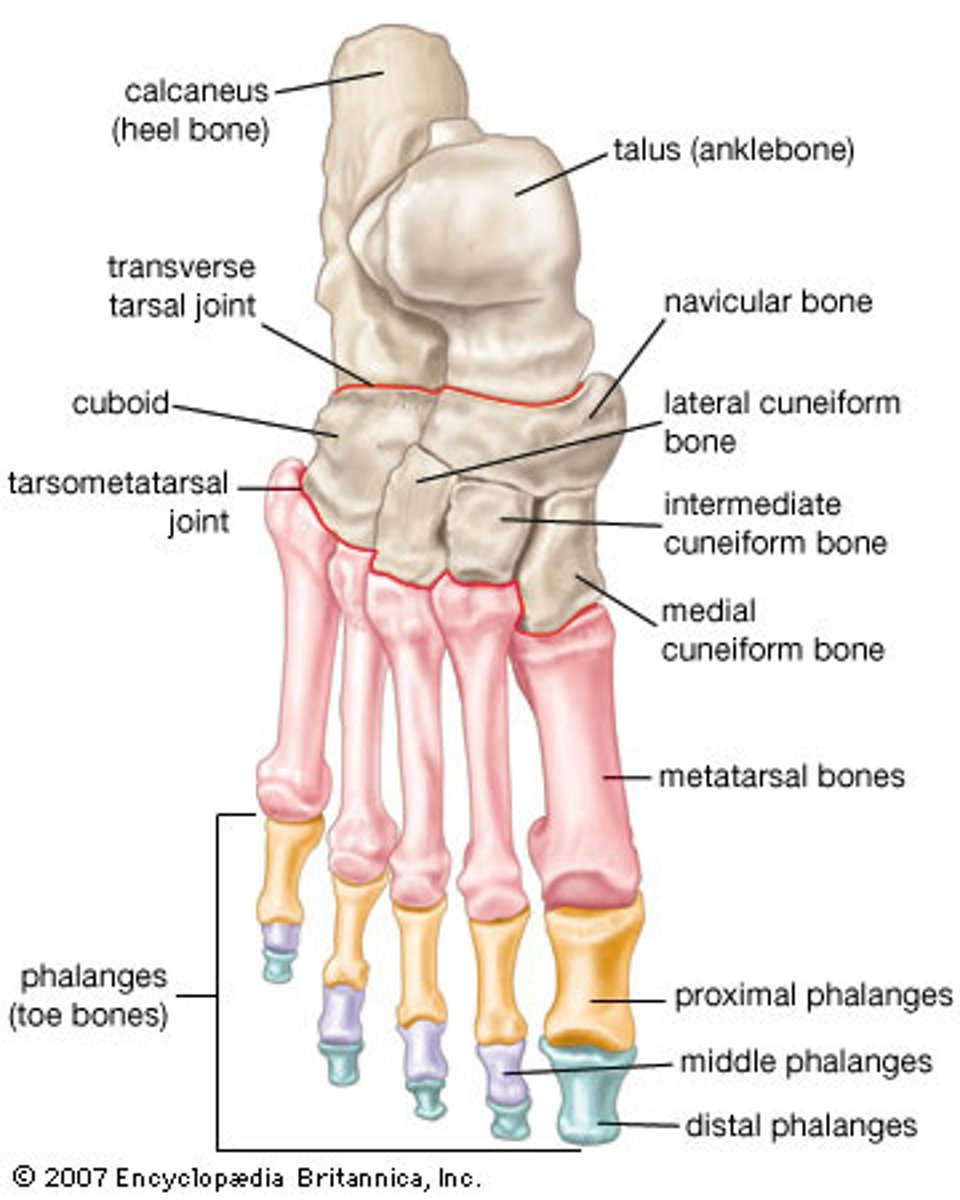
Hind/rearfoot
Talus and calcaneus
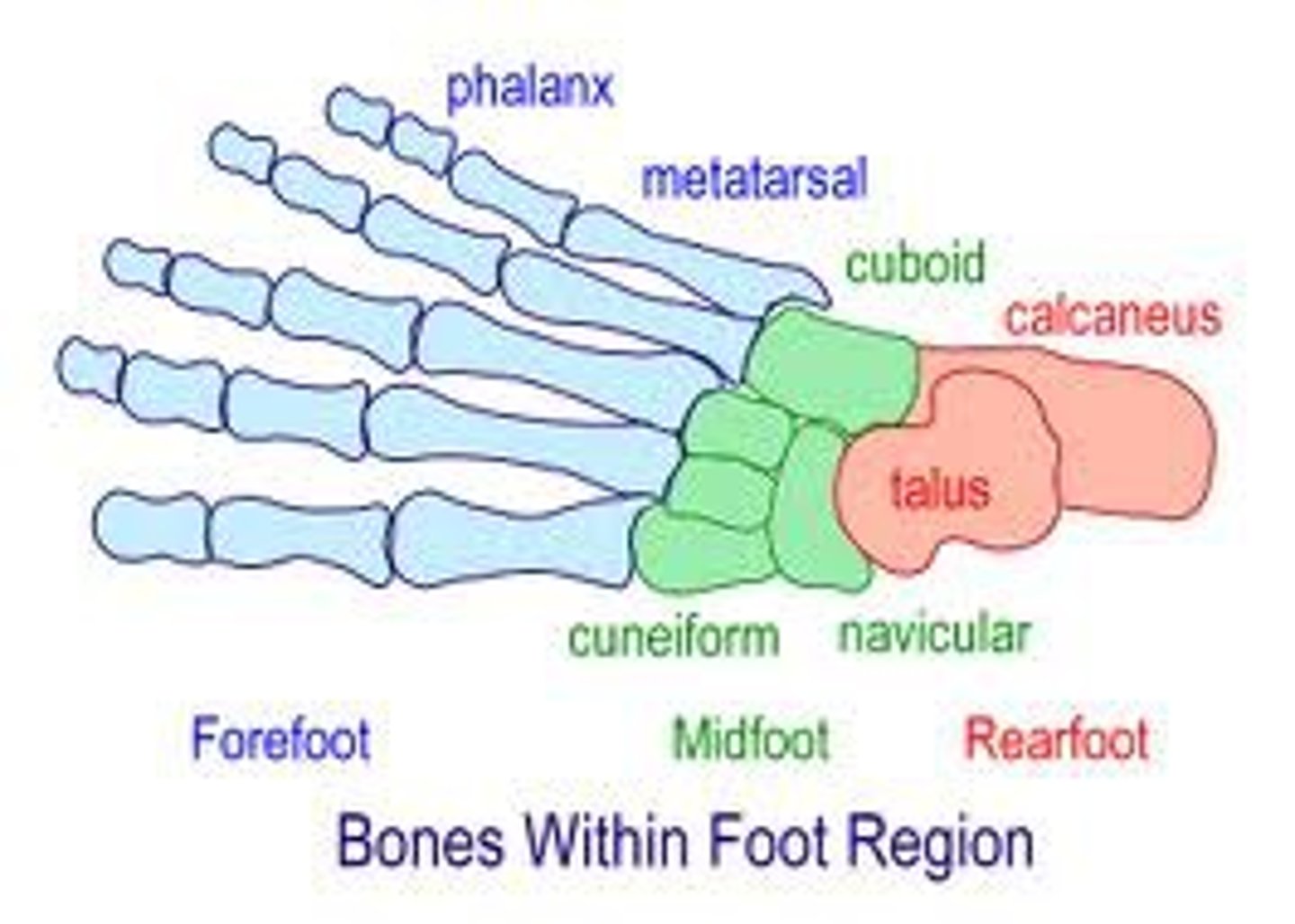
Talocrural joint
Sagittal plane, DF and PF
DF = 20 degrees
PF = 5O degrees
inversion/eversion
Occur at hindfoot
frontal planeAP axis
Plantar surface either moves towards midline or away from midline
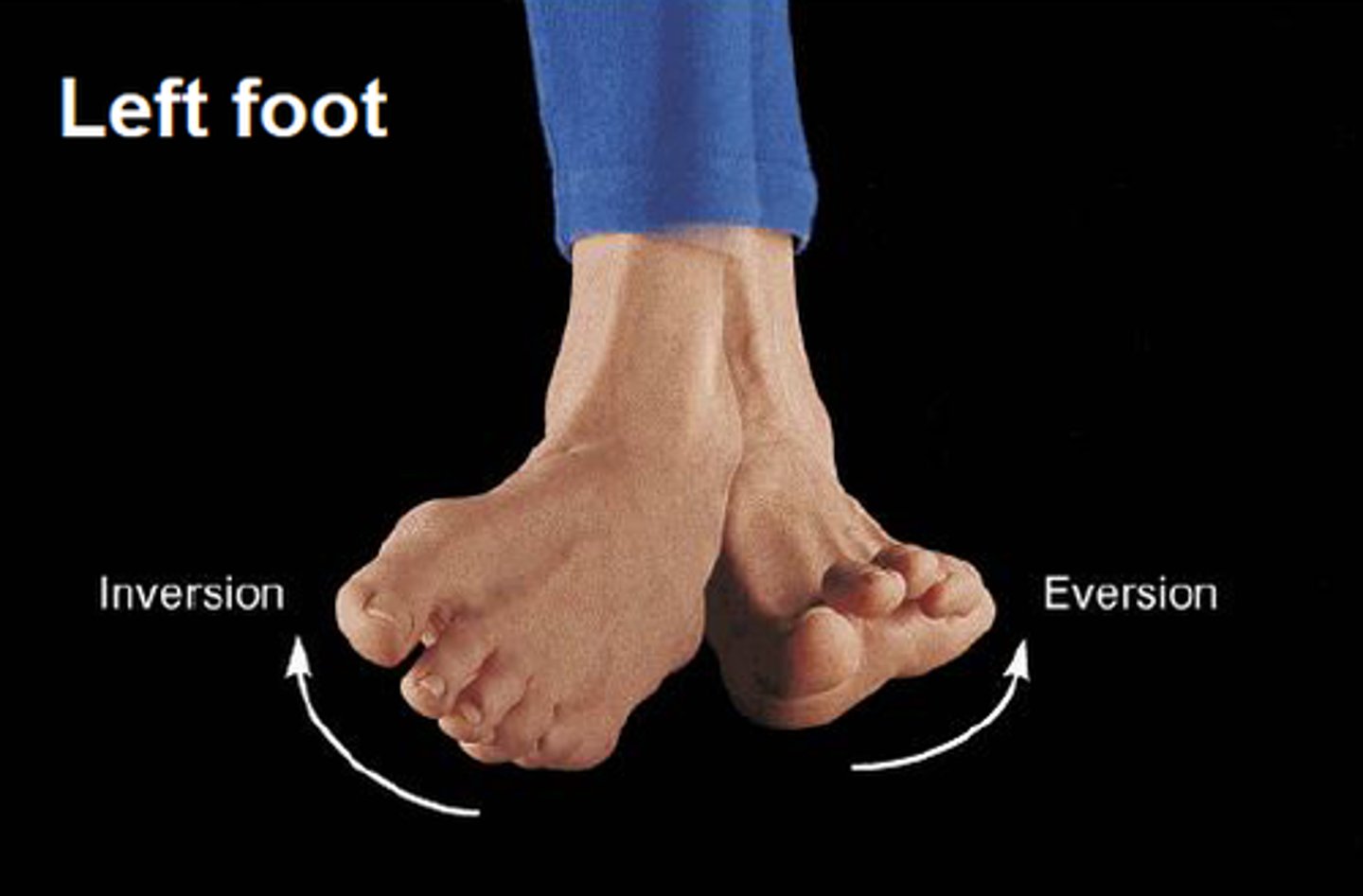
Calcaneal aDD/ABD
Transverse plane,
Vertical axis
Adduction: distal segment towards midline of body
Abduction: distal segment away from midline of body
Supination and Pronation open chain
Supination: PF, IN, ADD
Pronation: DF, EV, ABD
Tibiofibular joint
immovable synarthrosis
pertaining to joint between tibia and fibula
Proximal (fibular head and articulating facet of tibia by knee)
Middle: interosseus
Distal: cannot palpae
Saynovial joints
Motions: superior and inferior fibular gliding, fibular rotation
Interosseous membrane: supports proximal and distal joints, can have chronic irritation (shin plints)
distal tibiofibular joint
Fibrous - syndesmosis
stability
distal fibula and fibular notch of tibia
Stabilizes mortise

Talocrural joint
hinge, synovial,distal tibia, fibular form mortise for trochlea of talus (tenon which inserts into mortise), primary motions are dorsiflexion and plantarflexion, made of roof of tibia, and medial and lateral malleoli
1. Doesn't have good blood supple
2. No muscular attachments
3. Risk for delayed or non-union fracture
4. the most congruent joint in the body
5. Talus is wider anteriorly
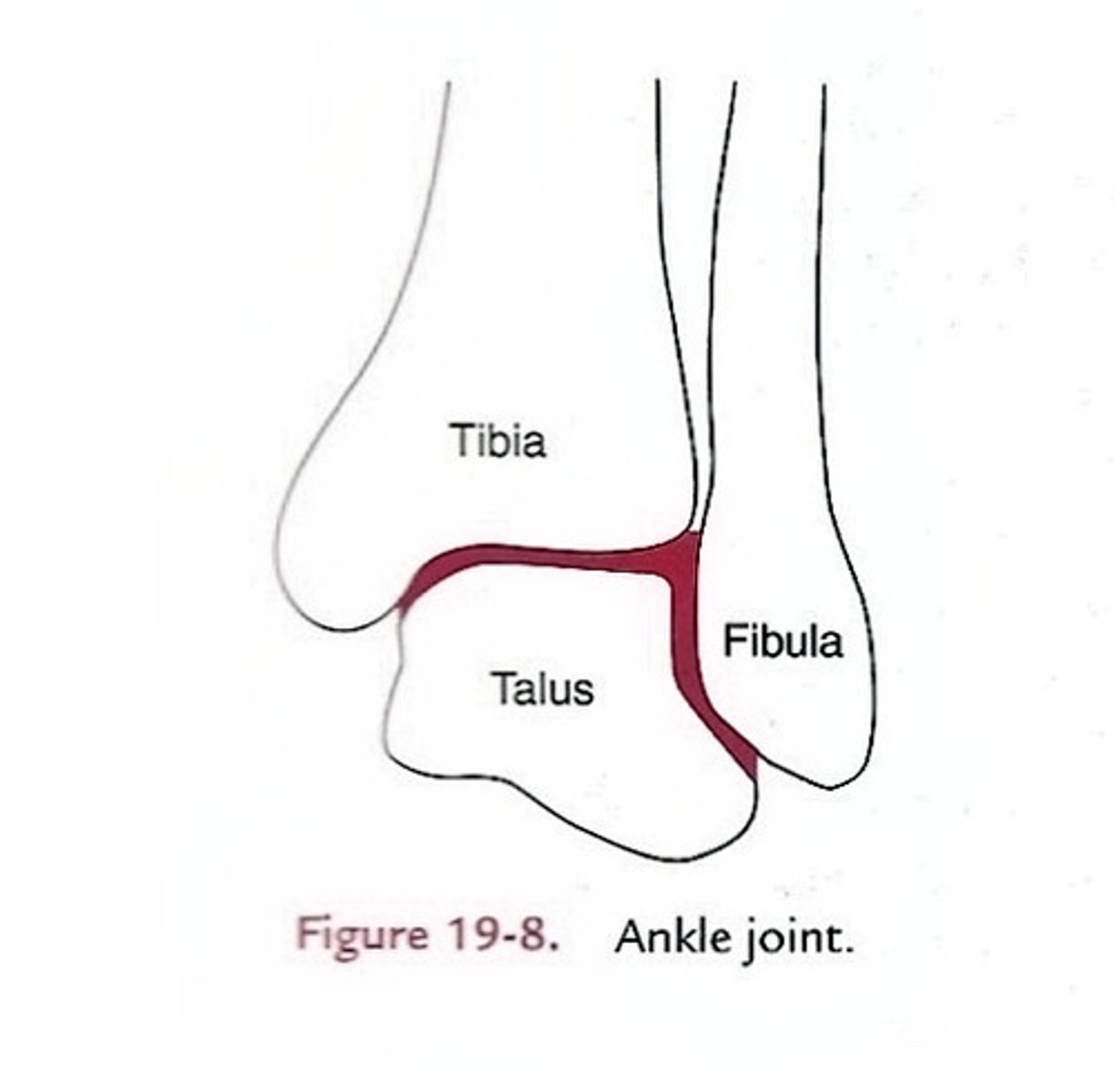
Talocrural joint motion
1. Single axis
2. Not in true AP plane
3. uniaxial but oblique hinge joint
4. Talocrural coupling - axis shifts slightly with motion "lower leg rotation initiates movement of the talus which causes simultaneous motion in all 3 joints"
5. Closed pack in DF. Ligaments and capsule are taught
6. PF: open pack, loose - where you want to do mobs
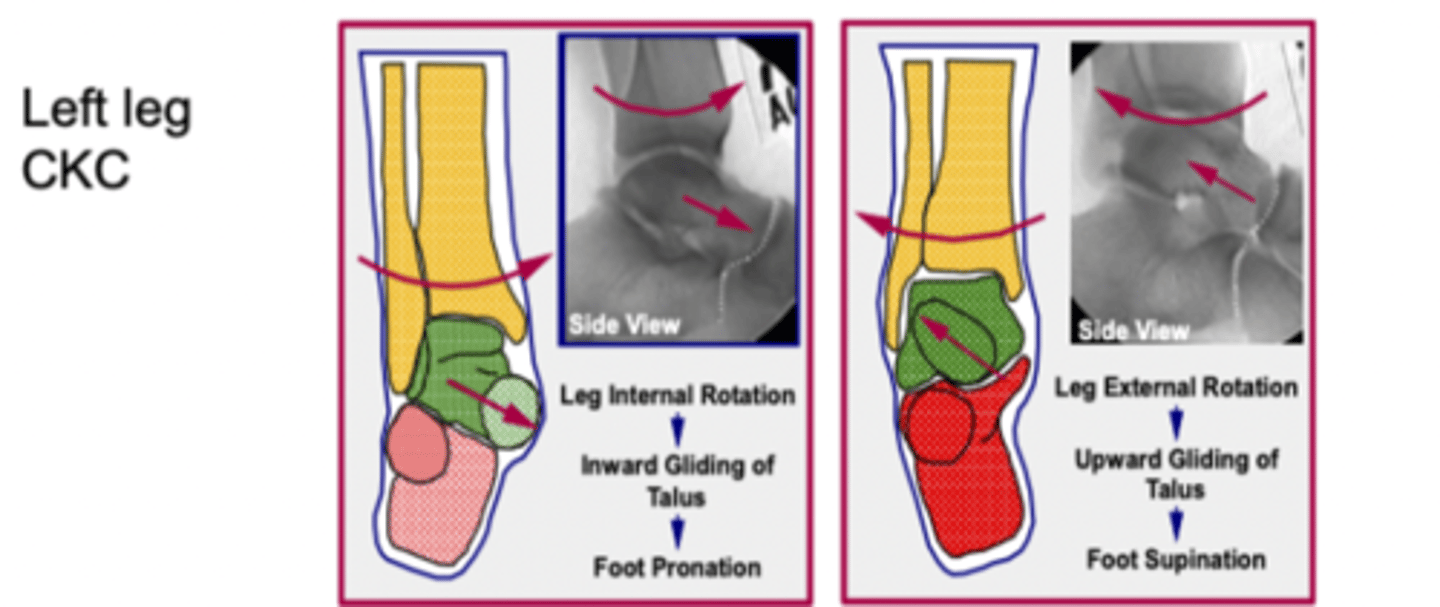
Talocrural joint capsular pattern
PF < DF